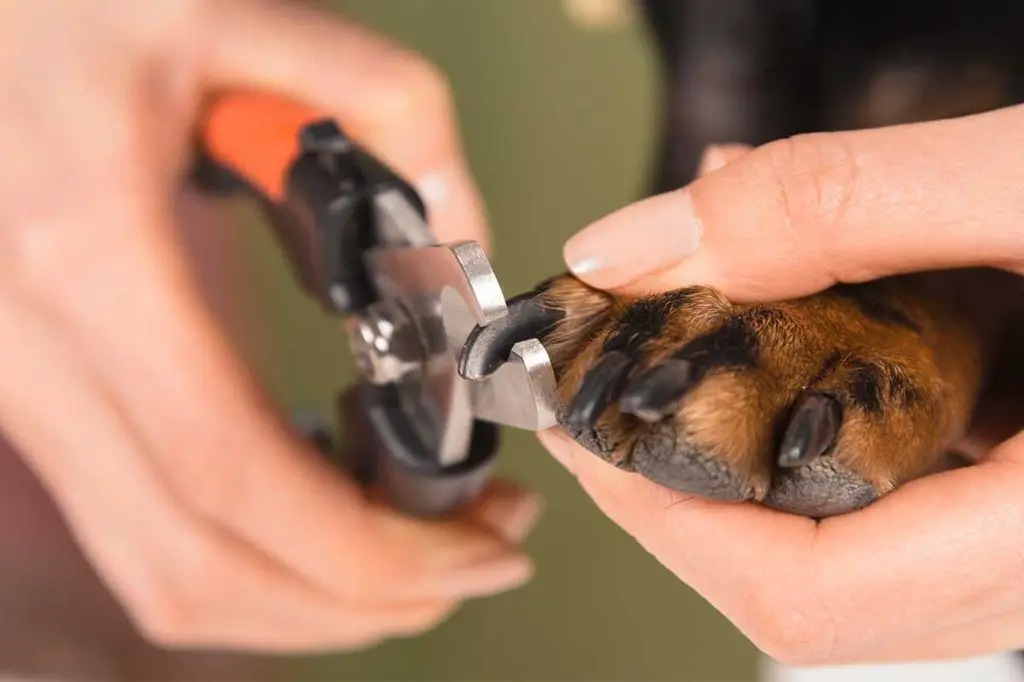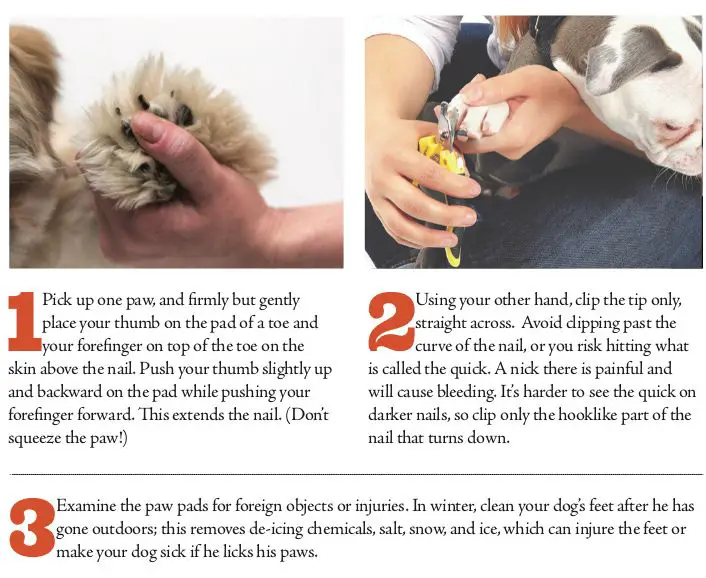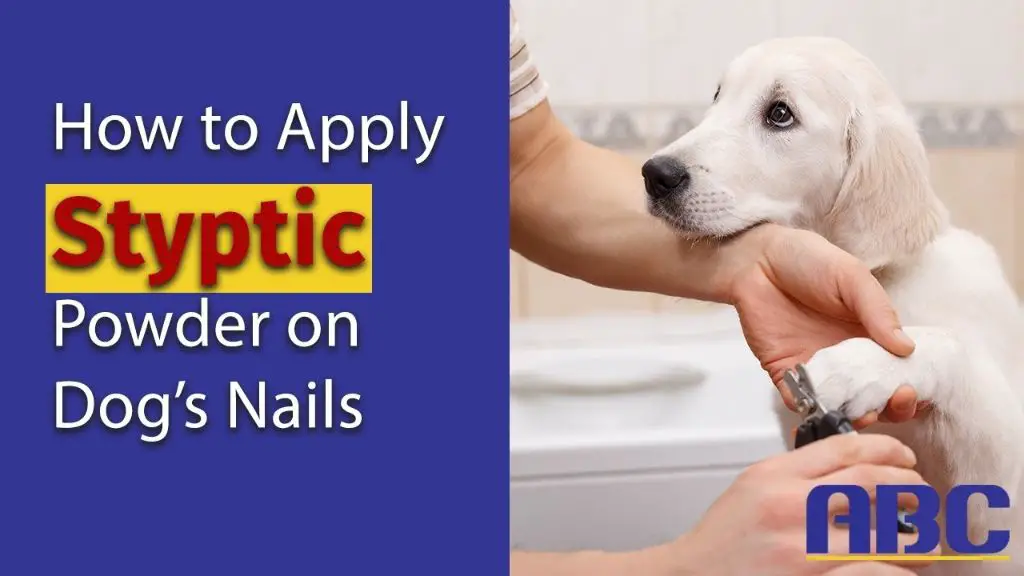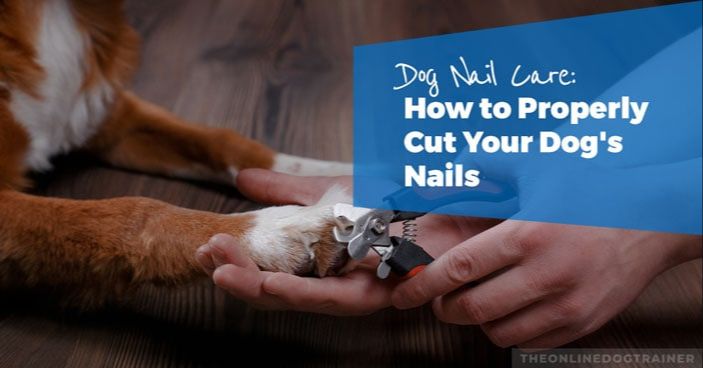Why Trim Dog Nails?
Trimming your dog’s nails regularly is an important part of maintaining their health and wellbeing. Overly long nails can cause a number of problems, so keeping them neatly trimmed prevents issues and keeps your dog comfortable.
One key reason to trim your dog’s nails is that it prevents the nails from splitting and bleeding. When a dog’s nails get too long, they are more prone to catching on surfaces and splitting or tearing. This can be very painful and result in bleeding. Regular trimming keeps the nails blunt and helps avoid cracks and tears.
Proper nail length also allows for appropriate foot structure and function. Nails that are too long alter the way a dog’s foot meets the ground and change their gait. This can put stress on their joints over time. Keeping the nails short allows the foot to function properly and reduces strain.
Finally, trimmed nails help avoid scratches during play or activities. Dogs use their paws frequently in play with humans and other dogs. Long nails are more likely to cause unintended scratches, which can be upsetting or even painful. Blunt, trimmed nails reduce scratches and make play more enjoyable for everyone.
When to Start Trimming
As puppies grow, their nails grow rapidly too. Puppies usually start needing nail trims around 3-4 months old, when their nails start making contact with the floor as they walk and play. At this point, the nail tips will become blunt and pale from scraping on hard surfaces.

To maintain healthy nail length, check your puppy’s nails weekly once they reach 3-4 months old. Look to see if the nail tips are starting to blunt and lighten from making contact with the floor. If they are, it’s time for a trim. Trimming them regularly at this stage will get your puppy used to the process and prevent overgrown nails.
Continue monitoring nail growth weekly. Even if your puppy plays outside on concrete or cement, which helps wear down nails, they will still likely need regular trims to maintain proper length. Get your puppy comfortable with having their paws handled and nails trimmed, to make it easier in the long run.
Supplies Needed
Trimming your dog’s nails without clippers requires just a few simple supplies:
- Human nail file or sandpaper – You’ll need a sturdy nail file or a piece of fine grit sandpaper. Look for files and sandpaper designed for human nails. These are gentler than pet-specific files.
- Peanut butter or treats – Have peanut butter or small treats on hand to distract your dog and reward them during the process.
- Styptic powder – Styptic powder helps stop bleeding if you accidentally trim the quick. Keep some nearby just in case.
Along with these supplies, you’ll want a non-slip surface for your dog to lay on and plenty of patience. Go slowly and don’t force it if your dog seems scared or anxious. Removing just a small amount at a time is fine.
Filing Technique

Filing your dog’s nails without clippers requires care and patience. Have someone help hold and reassure your dog during the process. This provides both physical and emotional support. Apply a small dab of peanut butter or spray cheese to a lick mat, Kong toy, or spoon. Let your dog lick it while filing to help keep them calm and distracted from the filing sensation.
Hold your dog’s paw firmly but gently. Extend one toe and nail at a time. Rest the nail on a hard surface like a table or countertop to keep it extended. Take your nail file and gently file across the tip of the nail in one direction, away from the quick. Apply light pressure and use short, smooth strokes. Work slowly and methodically. Give your dog praise and treats for cooperating. Continue filing gradually until you reach the desired length without hitting the quick. Repeat the process for each nail, taking breaks as needed to keep your dog comfortable.
Filing Tips and Tricks
Trimming your dog’s nails without clippers takes patience, care, and technique. Here are some tips for making the filing process smooth and stress-free for both you and your dog:
Work slowly to avoid stress. Don’t rush the filing process. Take your time and work nail by nail. If your dog shows signs of stress, take a break. Resume when he’s calmer.
Praise and treat for cooperation. Give your dog praise and treats during and after filing to reinforce calm behavior. This will help make it a more positive experience.
Target outer curve of nail, avoid quick. Carefully file only the tip of the nail, rounding the edges. Avoid the pink quick inside the nail, as this contains nerves and blood vessels.
By working patiently, praising cooperation, and carefully targeting just the nails’ outer edges, you can successfully trim your dog’s nails without clippers.
Troubleshooting Problems
Filing your dog’s nails can sometimes lead to problems like bleeding or agitation. Here are some tips for troubleshooting common issues:
If the nail starts bleeding after being trimmed, apply some styptic powder to stop the bleeding quickly. Styptic powder, made of ingredients like aluminum sulfate and benzocaine, helps constrict blood vessels and numb pain when applied to minor cuts and scrapes.

Go slower with the filing if your dog starts resisting or becomes agitated during the process. Don’t rush through trimming – take breaks as needed and consider doing shorter sessions over multiple days if your dog has anxiety about nail trims.
Try trimming your dog’s nails after a long walk when they are more tired and relaxed. The ideal time is when your dog is calm and distracted. Avoid times when your dog is energetic or stressed.
When to See a Groomer
While trimming your dog’s nails at home can be convenient and cost-effective, there are some situations where it’s best to seek professional help from a dog groomer or veterinarian:
If your dog’s nails are severely overgrown, to the point where the quick is not visible, take them to a professional. Cutting overgrown nails runs a higher risk of hitting the quick and causing pain and bleeding.
Ingrown nails or nails with severe curves or hook shapes can be very painful for dogs if left untrimmed. A professional groomer has the proper tools to carefully trim ingrown portions without hurting your dog.
If you don’t feel comfortable trimming your dog’s nails due to their size, behavior, or nail condition, that’s perfectly okay. Professional groomers and veterinarians trim nails every day and know techniques to keep dogs calm and trim nails safely.
Seeking professional help ensures your dog’s nail health while avoiding risks associated with overgrown, ingrown or thick nails. Don’t be afraid to ask for help to keep your dog comfortable.
Healthy Nail Tips
Keeping your dog’s nails healthy and strong will make them less prone to breaking and overgrowth. Here are some tips for promoting healthy nail growth:
Feed a diet rich in vitamins and minerals. A nutritious dog food containing vitamins like biotin and minerals like zinc and copper will help keep nails strong. Look for dog foods designed for skin and coat health.
Provide scratching posts and boards. Giving your dog surfaces to scratch and file their nails on, like scratching posts and textured boards, can help wear nails down naturally.
Walk on varied surfaces. Taking your dog for walks on different surfaces like concrete, asphalt, grass, and dirt can help wear down nails through friction. The changing textures keep nails nicely filed.
Signs of Overgrown Nails
Clipping your dog’s nails regularly is important not just for their appearance but for their health and comfort. There are some clear signs that indicate when your dog’s nails have become overgrown and are in need of trimming:
Clicking on floors – If you hear your dog’s nails clicking loudly on hard floor surfaces like tile or hardwood, the nails have likely grown too long. The sound comes from the nails hitting the floor before the pads of the paw do.
Nails touching floor when standing – Look at your dog’s stance when they are standing. If the nails are so long that they touch the ground, it’s time for a trim. The nails should not extend past the pads of the paw.
Twisted stance – Overgrown nails can become uncomfortable for dogs. You may see them standing with their paws twisted inward or outward in an attempt to keep the long nails elevated off the floor.
Long-Term Nail Care
Maintaining your dog’s nails is an ongoing process. Here are some tips for keeping them trim long-term:
Incorporate nail trims into your weekly grooming routine, such as when you bathe your dog. Checking and filing nails weekly helps prevent overgrowth.

Watch carefully for signs your dog’s nails are getting too long, such as clicking on the floor or getting caught on fabrics and furniture.
Use scratching posts and walks on sidewalks or hard surfaces to help wear down nails naturally between trims.
Consider investing in high-quality nail clippers or files to make regular trims easier. Your groomer can also keep nails maintained between home trims.
Creating a lifelong nail care routine ensures your dog’s nails stay a healthy length for their comfort and safety.